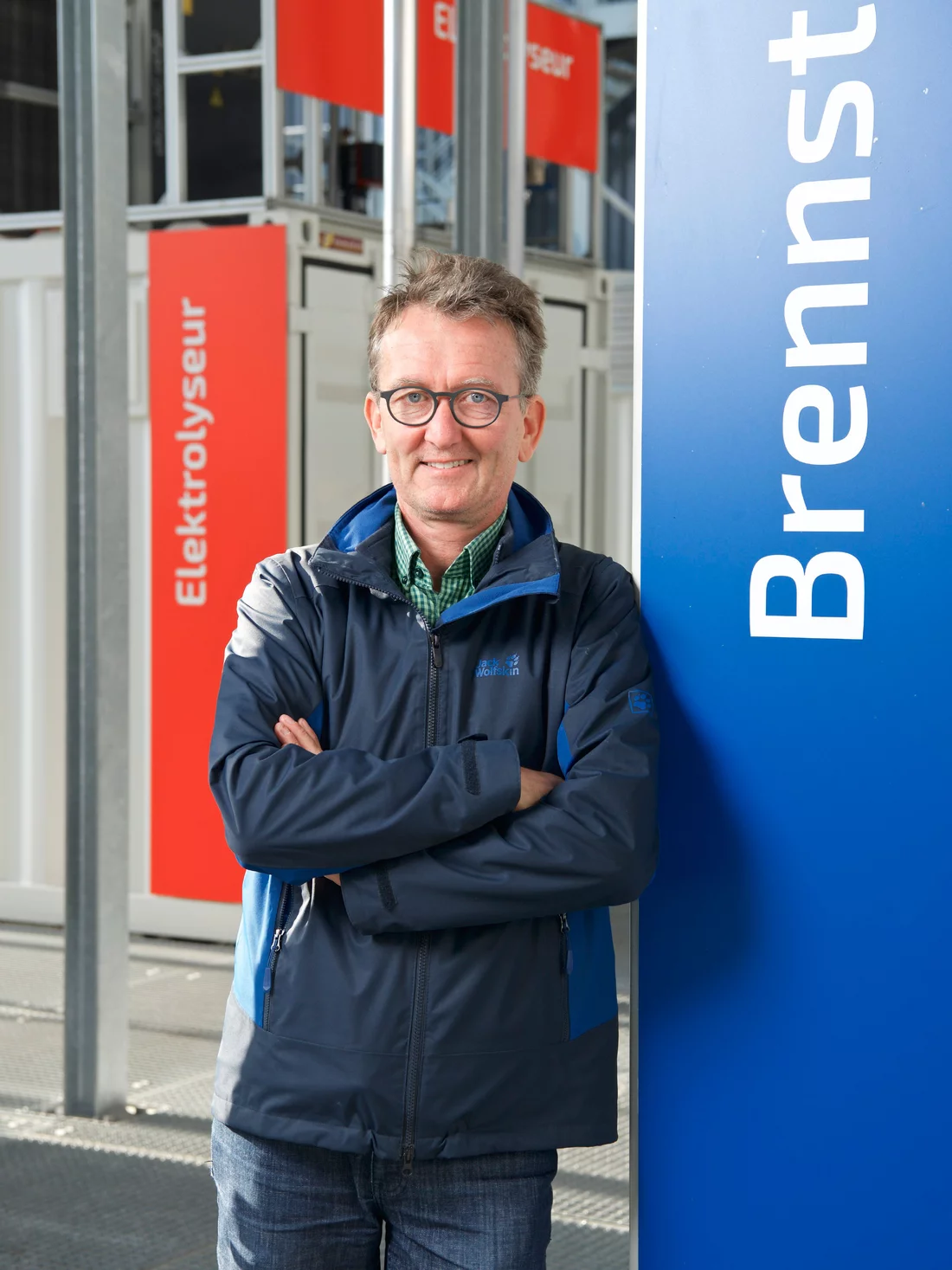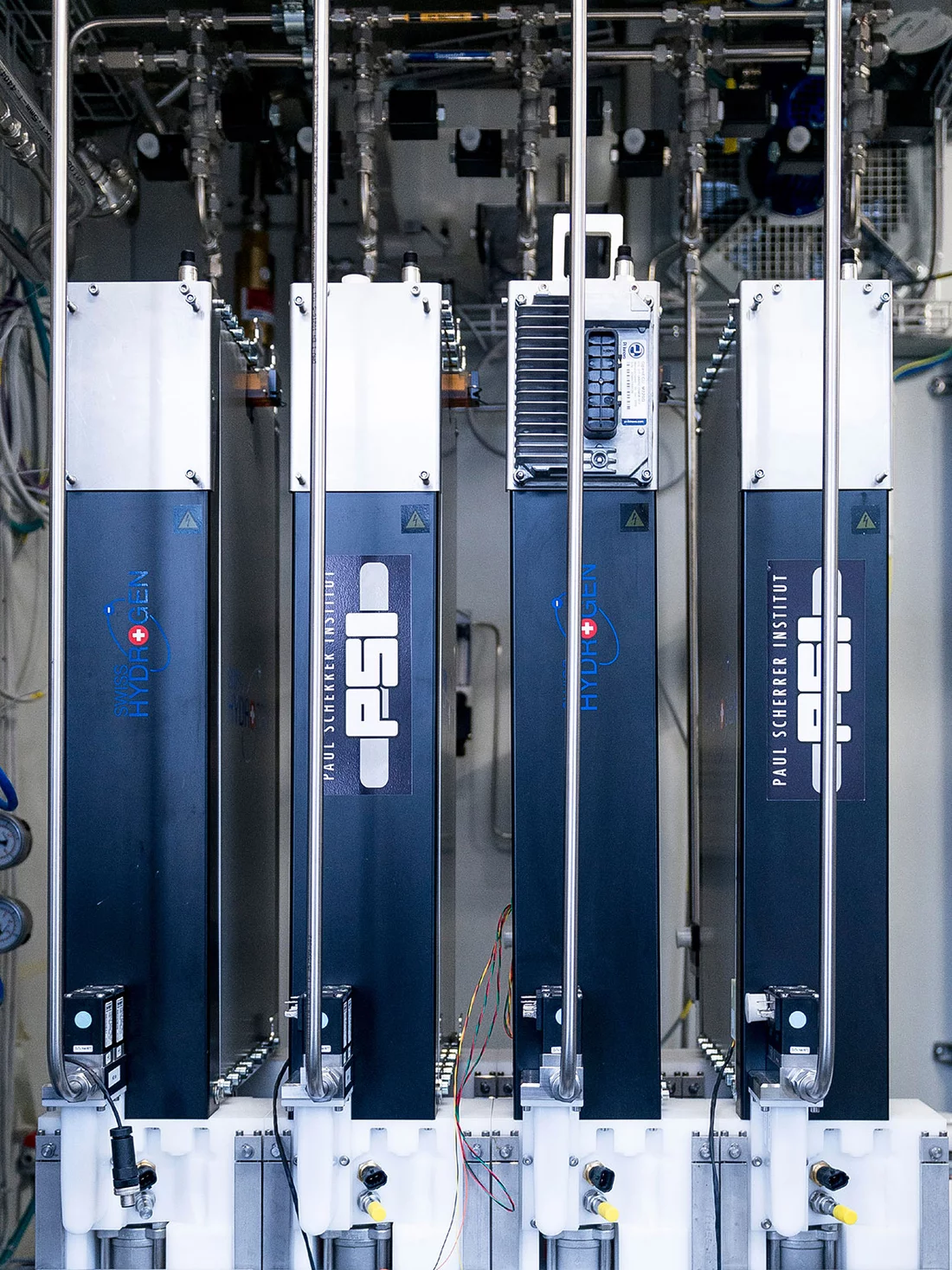If photovoltaic or wind power plants produce more electricity than the network can absorb, valuable energy is lost. At the ESI Platform, PSI researchers are investigating how fuel cells can contribute to making this energy usable in a targeted way through storage.
The power network cannot store energy. But nature doesn't care about that. So photovoltaic or wind power plants produce energy in varying amounts according to the weather conditions, time of day, and season. If the sun or wind does too good a job and the electricity is not consumed, the network operators have only one option: to throttle the plants.
Buffering surplus power
So this important energy won't go to waste, PSI researchers at the Energy System Integration (ESI) Platform are investigating different ways to store electricity produced by photovoltaic or wind power plants in times of surplus and make it usable again on demand. The researchers' goal is to assess the potential of an industrial implementation of these various techniques, known collectively as power-to-X methods.
The ESI Platform provides the infrastructure needed to do it. The first step is the same for all of these methods: To enable longer-term storage of the energy contained in the electric power, it must first be converted. That is done with a so-called electrolyser. There the surplus electricity is used to split water into hydrogen and oxygen. After these two gases have been purified, they are stored in tanks at the ESI Platform. In this way they can be stored for arbitrary lengths of time and put to further use on demand.
Power regeneration with fuel cells
For this further use, several pathways are open – one of them leads through fuel cells. These reverse the electrolysis process and generate electric power again from the two gases, hydrogen and oxygen.
To investigate the industrial potential of fuel cells for the utilisation of surplus energy from photovoltaic or wind power plants, PSI researchers have, in collaboration with the Fribourg-based company Swiss Hydrogen, installed an experiment container at the ESI Platform that simulates an industrial environment on a small scale. Since one fuel cell system alone produces too little electricity, several are hooked up together in the experiment container. Felix Büchi, head of the Laboratory for Electrochemistry at PSI, explains the reason for the step from the lab to the ESI Platform: In the laboratory, we can neither test fuel cell systems of the necessary size nor see how the systems behave in an industrial setting.
The fuel cell plant in the experiment container consists of four fuel cell systems with 236 individual cells each. Big enough to allow an initial calculation towards an industrial implementation and to answer those scientific questions that can't be simulated in the laboratory.
Economic feasibility is crucial
What's special is that, on the ESI Platform, pure oxygen is available to the researchers for the operation of their fuel cells. With pure oxygen, a higher efficiency factor can be achieved than with fuel cells that typically are installed in vehicles and use oxygen from the air
, Büchi stresses.
The efficiency factor indicates how much of the original energy is still available after the different conversion steps. An efficiency factor of 50 percent is the long-term goal being pursued for the path from electricity to gas to electricity via fuel cells. The higher the efficiency factor, the lower the energy losses and thus the costs for the entire process. Because in the end the costs determine whether a technology can be implemented economically
, says Büchi. That makes the efficiency, together with the expected service life, a significant factor for the economic feasibility of fuel cells, and it raises the importance of research at the ESI Platform into how to improve both. In addition, investments in infrastructure, for example to store oxygen, need to be factored into the calculation of costs. One more important point that the researchers are incorporating into their evaluation of the industrial potential.
Power on demand
Several applications are open for the electricity produced from hydrogen and pure oxygen via fuel cells. If there is too little power in the network, it can be fed back in. Another application field is on the horizon with the rise of electromobility. Battery-powered electric vehicles require high-performance charging stations at which they can be rapidly charged. This increasing demand could overburden the electric grid in the future
, Büchi says. With fuel cells, the electricity could be produced precisely then, when the customer wants to fast charge his vehicle. A fuel cell system operated with hydrogen and pure oxygen can also be used as an uninterruptible power supply. This is required mainly in critical infrastructures such as computing centres, hospitals, or traffic control stations.
The ESI Platform at PSI
The ESI Platform has been in operation since the fall of 2016. Its goal is to study and refine, in close collaboration with partners from research and industry, different variants of power-to-X technology and energy-efficient utilisation of biomass, with a focus on their technical and economic feasibility. The platform is open to partners from industry. Besides the fuel cell and electrolysis technology, two methods for the methanation of biomass are currently also being tested at the ESI Platform.
Text: Paul Scherrer Institute/Martina Gröschl
Additional information
Overview: ESI Platform – new pathways to the energy system of the futureContact
Dr. Felix Büchi, Head of the Laboratory for Electrochemistry,Paul Scherrer Institute, 5232 Villigen PSI, Switzerland
Telephone: +41 56 310 24 11, E-mail: felix.buechi@psi.ch


